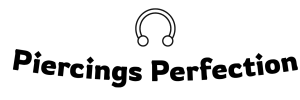When it comes to nose piercings, a stud nose piercing is a popular choice for its elegant and versatile styles. Whether you’re looking for a classic and timeless design or a trendy and unique piece of jewelry, there is a wide variety of nose piercing studs available to suit your preferences. From VVS diamonds to gold hoops, tiny studs to gemstone designs, the options are endless.
Nose piercing studs can be made from various materials, including 18k white gold, rose gold, platinum, and titanium. The prices range from $59 for a simple gold hoop to $289 for a luxurious VVS diamond stud. These studs have gained popularity and high ratings, with customer reviews consistently praising their quality and appeal.
Not only do stud nose piercings allow you to express your personal style, but they also hold cultural significance in many communities worldwide. Traditionally symbolizing beauty, status, and identity, nose piercings have been a part of different cultures for centuries.
Once you’ve decided on the perfect stud nose piercing, it’s essential to understand the piercing process, healing timeline, and aftercare practices. Following proper aftercare will help ensure a successful healing process and minimize the risk of infections and complications.
Key Takeaways:
- Stud nose piercings offer a wide array of elegant and versatile styles.
- They come in various materials, including gold, diamonds, and gemstones.
- Nose piercings have cultural significance in many communities.
- Proper aftercare is crucial to ensuring a successful healing process.
The Cultural Significance and Placement Options of Stud Nose Piercing
Stud nose piercing holds a rich cultural significance in various communities across the globe. In these cultures, nose piercings are more than just a fashion statement; they serve as symbols of beauty, status, and identity.
When it comes to nose piercing placement, the nostril is the most common choice for wearing nose studs. People often opt to place their nose stud on either the left or right side of the nostril, depending on their personal preference. Another popular placement option is the nasal septum piercing, which involves piercing the cartilage between the nostrils.
One of the remarkable aspects of stud nose piercings is the seemingly endless variety of designs available. From simple and minimalist studs to more elaborate and decorative ones, there’s a vast range of options to suit different styles and preferences. This allows individuals to personalize their nose piercings and express their unique individuality through their choice of jewelry.
Stud nose piercings are not merely adornments; they represent a cultural heritage and a form of self-expression.
For those who prefer a more subtle and understated look, a tiny stud with a discreet design can add a touch of elegance to any outfit. On the other end of the spectrum, those seeking a bold and eye-catching statement can opt for larger studs adorned with gemstones or other decorative elements.
Whether it’s a single stud or multiple ones adorning both nostrils or the septum, stud nose piercings offer a wide array of possibilities for individuals to showcase their unique style and celebrate their cultural heritage.
The Piercing Process, Healing Timeline, and Aftercare Practices
Getting a stud nose piercing is a precise procedure that should be performed by a trained professional using sterilized equipment. The pain experienced during the piercing process can vary from person to person. While some may only feel mild discomfort, others might experience a brief sharp pain. Rest assured, the pain is usually minimal and short-lived.
After the piercing, proper aftercare practices are crucial to ensure optimal healing. To care for your nose piercing, it is recommended to clean the piercing twice a day using a saline solution or a mild soap. Gently clean the area around the piercing, being careful not to twist or move the stud excessively. It’s important to avoid touching the piercing with dirty hands to prevent infections.
Additionally, it is essential to avoid activities such as swimming in pools or hot tubs and exposing the piercing to excessive sunlight until it is fully healed. Changing the nose stud before the piercing has completely healed, which can take up to 6 months, should also be avoided. By following these aftercare practices, you can minimize the risk of infections and complications while promoting a successful healing process for your stud nose piercing.
FAQ
Q: What are some popular styles of nose piercing studs?
A: Nose piercing studs come in a variety of styles, including VVS diamonds, gold hoops, tiny studs, and gemstone designs.
Q: How much do nose piercing studs cost?
A: Prices for nose piercing studs vary depending on the style and material. They can range from $59 for a simple gold hoop to $289 for a VVS diamond stud.
Q: What materials are nose piercing studs made of?
A: Nose piercing studs are available in different materials, such as 18k white gold, rose gold, platinum, and titanium.
Q: Is stud nose piercing a long-standing cultural tradition?
A: Yes, stud nose piercing has cultural significance in many communities around the world, symbolizing beauty, status, and identity.
Q: Where can I get a stud nose piercing?
A: It is recommended to visit a trained professional piercer who uses sterilized equipment to ensure safe and proper piercing.
Q: Does getting a stud nose piercing hurt?
A: The level of pain during the piercing process varies from person to person. Some may experience mild discomfort, while others may feel a brief sharp pain.
Q: How should I take care of my new stud nose piercing?
A: Proper aftercare is essential for healing. It involves cleaning the piercing with saline solution or a mild soap twice a day, avoiding touching the piercing with dirty hands, and avoiding swimming pools, hot tubs, and excessive sun exposure.
Q: When can I change my nose stud after getting a piercing?
A: It is recommended to wait until the piercing is completely healed, which can take up to 6 months, before changing the nose stud to prevent infections and complications.
